Croissant in France. Viennoiserie in Austria. Recently, I've seen a bunch of conversation about its history. Reading about the Ottoman empire, I became a fan of a 16th century-inspired myth of Viennese bakers creating it, their goal to shape crescent pastries to collectively warn their city's defenders of an Ottoman effort to mount a secret tunnel attack.Thus the infamous crescent was a delicious warning to defend against bitter defeat!
Regardless of who created them (or why), the eating experience can be sublime: delicate, lightly chewy inside – crisp flake outside, the meeting between the textures a buttery sweetness creating layers of sensory delight. Yet from the baking perspective, much can go wrong. And in its 500 years of history, this pastry has been in all sorts of recipes. From levain, straight dough, milk and cream in the dough, butter or even oil. In Switzerland, my sister offered a Swiss version call "the kipferl," a croissant topped with seeds. And eating at Eataly, I saw a variation with "farro and evoo," healthy but textured cousin to the crisp and flaky Parisian delicacy oozing with butter richness with which many of us are familiar.
This week I decided to make a rendition of a formula for levain dough, including a small bit of extra virgin olive oil (about 10 percent) as a flavor enhancer. A third of the dough was spelt, whole grain, for a nod to health and taste, as spelt has a special quality of deep flavor when baked.
The dough was mixed, without any descernible difficulty in acheiving a tight gluten structure, and maybe the spelt, allowed for extensibility I noticed when laminating and finally shaping the croissants. But with all things, not all was completely right either… Cool air, the wrong yeast, didn't give the necessary push to make a wobbly risen and perfect croissant….instead I get a sort of flaky and crunchy outside, but a bit doughy inside, but the nice flavor of spelt and butter made up for total disaster! Cover with almond paste and there a camouflaged almond croissant! Back to the drawing board!

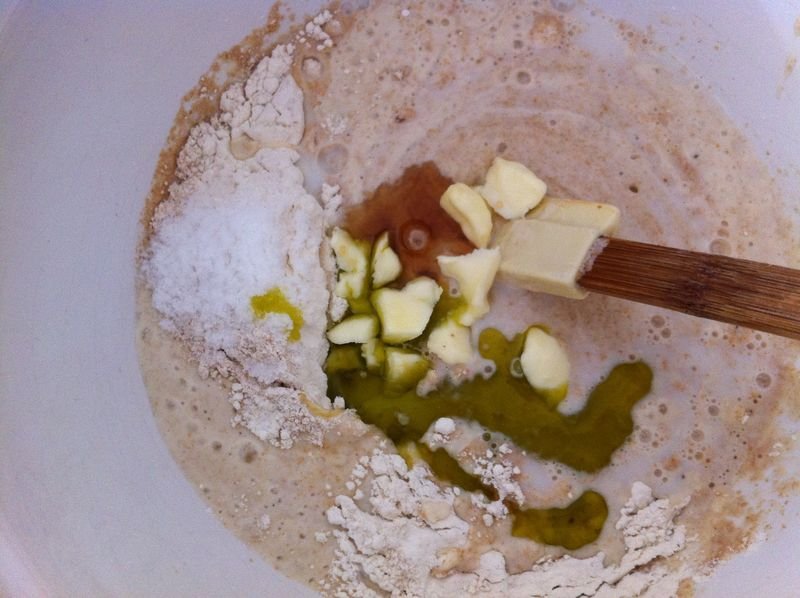
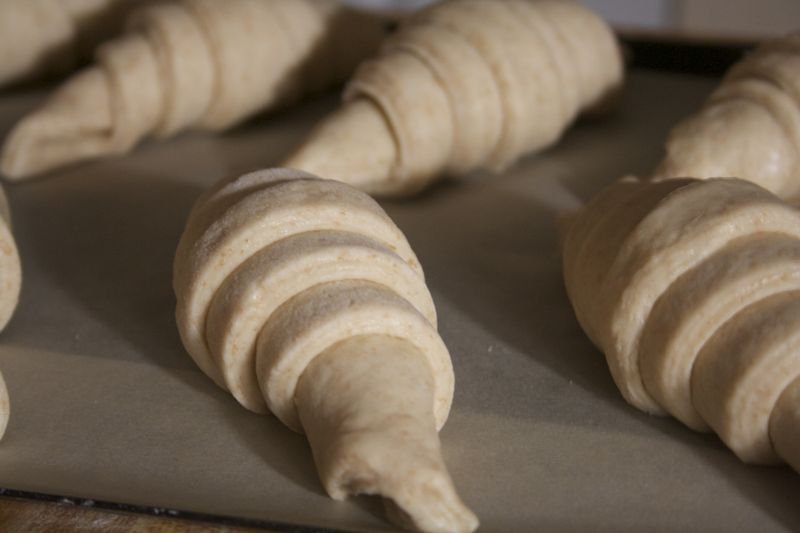
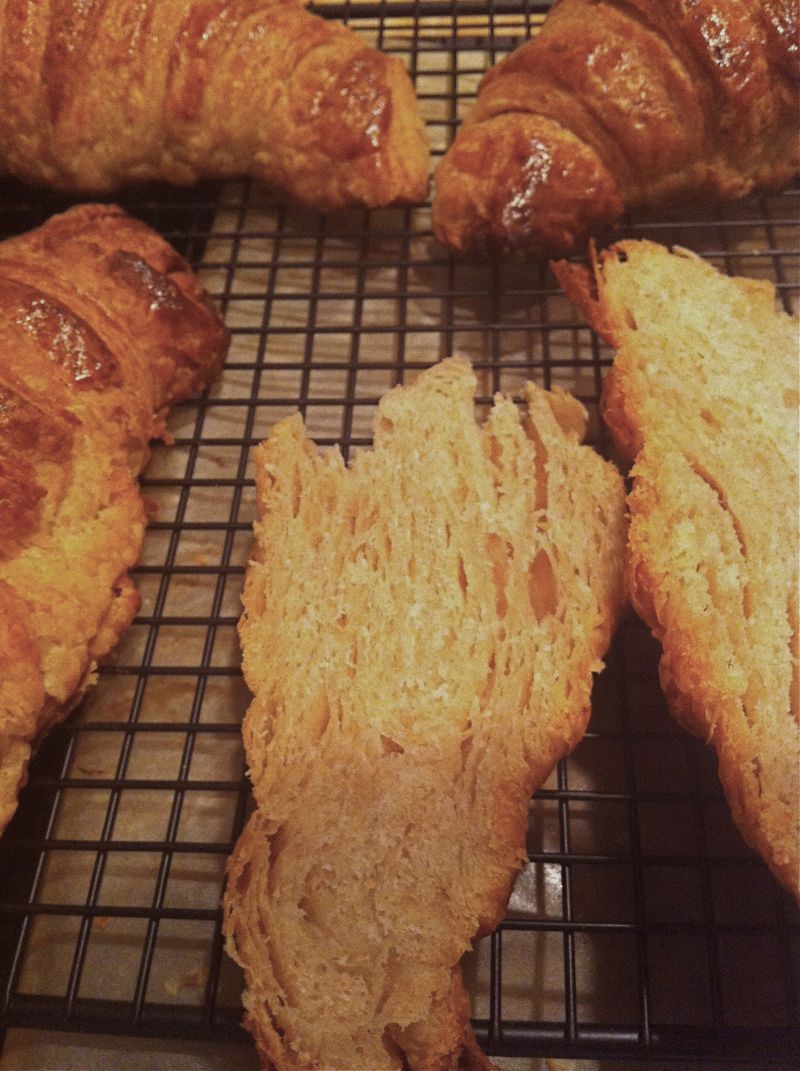
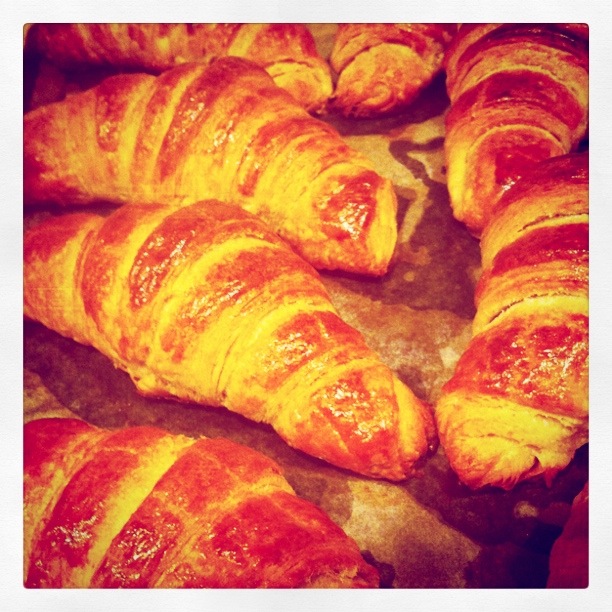
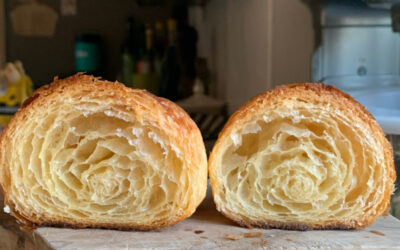

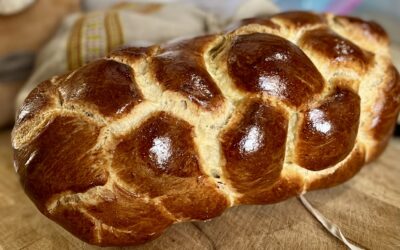
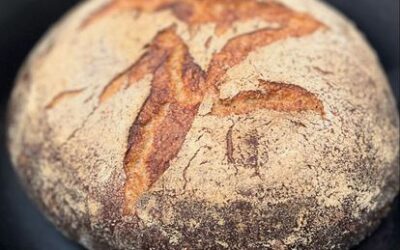
With practice comes perfection 🙂
So very hard to get a good one….I’m curious about the olive oil, but am wondering if its liquid state is very good for giving the steaming rising effect of butter. Curious to see your further experiments.
Hey Oliverde, Its so hot now, don’t think I’ll be making them soon, but from what I did, it was not having osmotolerant yeast. Problem with rising didn’t happen because of oil, minimal in dough, about 10%.
Oil tends to tenderize gluten more readily than solid fat. So 10% oil in the dough is probably way too much…weakened the dough. Try reducing to 2 or 3% on flour, but using the most pungent extra virgin you can find.